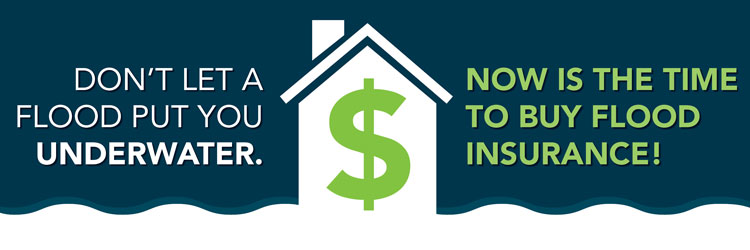Ramsey County services are not impacted by the Federal shutdown at this time.
Floods

Prepare for flooding
Heavy rains can create a significant risk for flooding in Ramsey County. All properties can be at risk of flooding — not just those located in low-lying areas or near lakes and streams. Always follow flood safety guidelines and do not attempt to drive through flooded areas. Stay safe and protect yourself and your property.
Flood safety is crucial. Remember: "Turn Around, Don’t Drown."
Flood insurance
Flood damage can be expensive to repair. Just a few inches of water in a basement can cause more than $10,000 worth of damage.
Most regular homeowners and renters insurance policies do not cover flood damage. Homeowners, renters and businesses are encouraged to review their current insurance policies and consider adding flood coverage. Don’t wait until waters are rising; there's a 30-day period before policies go into effect.
Most insurance companies will not cover flooding if the water is coming from outside the home. Even those not in a floodplain should consider supplemental flood insurance.
Don’t let a flood put you underwater. Flood insurance is available through most homeowners and renters insurance agencies and the Federal Emergency Management Agency (FEMA) National Flood Insurance Program.
Insurance resources
Flood dangers
Flooding ranks with lightning as the most deadly storm danger. Flood waters are incredibly deadly. Do not drive, walk or play in them!
In Ramsey County there are several types of flooding (PDF) that can affect us. All of them can be very damaging to your home or business and deadly to those caught in them.
Many people assume that if they live in a high area or away from a river or lake that they are safe from flooding. Not only should they still be concerned about flooding they encounter on the road, but flash flooding can happen anywhere heavy rain falls quickly, especially if local storm drains are overwhelmed or blocked by debris.
See our Getting Ready page for more information about flood watches and warnings and emergency planning for homes and businesses.
Keep your storm drain clear! Drain grates that are clogged by leaves and street debris can't do their job and can cause flooding of the homes and business nearest them. Adopt your local storm drain: keep it clear of dirt and debris so it can do its job. You may be saving your home and your neighborhood.
Additional resources
Before a flood
- Flood safety information (Ready.gov)
- FloodSmart website (FEMA)
- Flood protections for private water wells (PDF, Minnesota Department of Health)
During a flood
After a flood
- Reentering your flooded home (Centers for Disease Control and Prevention [CDC])
- Video: Cleaning your home after a flood (University of Minnesota)
- Cleaning up your home (CDC)
- Mold and moisture (MDH)
- Food and water safety (CDC)
- Flood cleanup for restaurants and grocers (U.S. Food and Drug Administration)